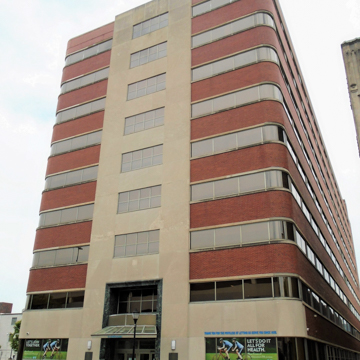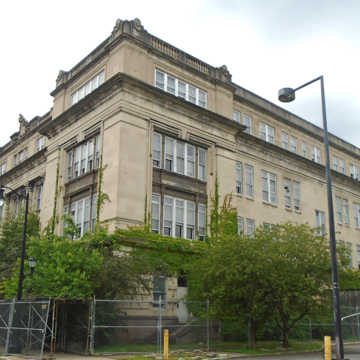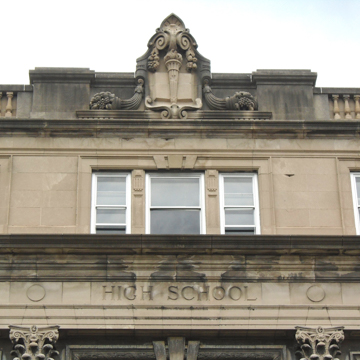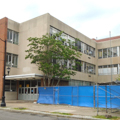You are here
Blue Cross/Blue Shield Operations Center
For two generations, Atherton, a former member of the Carrère and Hastings office and later a collaborator with Philadelphia's Paul Cret on the Pennsylvania Battle Monuments, was Wilkes-Barre's most important twentieth-century architect. After World War II, perhaps influenced by Lacey, the firm shifted with the times toward modernism but within the Beaux-Arts straitjacket of symmetry. This is Wilkes-Barre's first International Style building, with horizontal strips of windows sweeping around rounded corners. Nearby, at 80 N. Washington Street, is the James M. Coughlin High School (1912), at the time the city's only high school—marking the assumption that most children would work in the mills and did not need higher education. The Beaux-Arts school is the work of Wilkes-Barre architect Owen McGlynn.
Writing Credits
If SAH Archipedia has been useful to you, please consider supporting it.
SAH Archipedia tells the story of the United States through its buildings, landscapes, and cities. This freely available resource empowers the public with authoritative knowledge that deepens their understanding and appreciation of the built environment. But the Society of Architectural Historians, which created SAH Archipedia with University of Virginia Press, needs your support to maintain the high-caliber research, writing, photography, cartography, editing, design, and programming that make SAH Archipedia a trusted online resource available to all who value the history of place, heritage tourism, and learning.




















